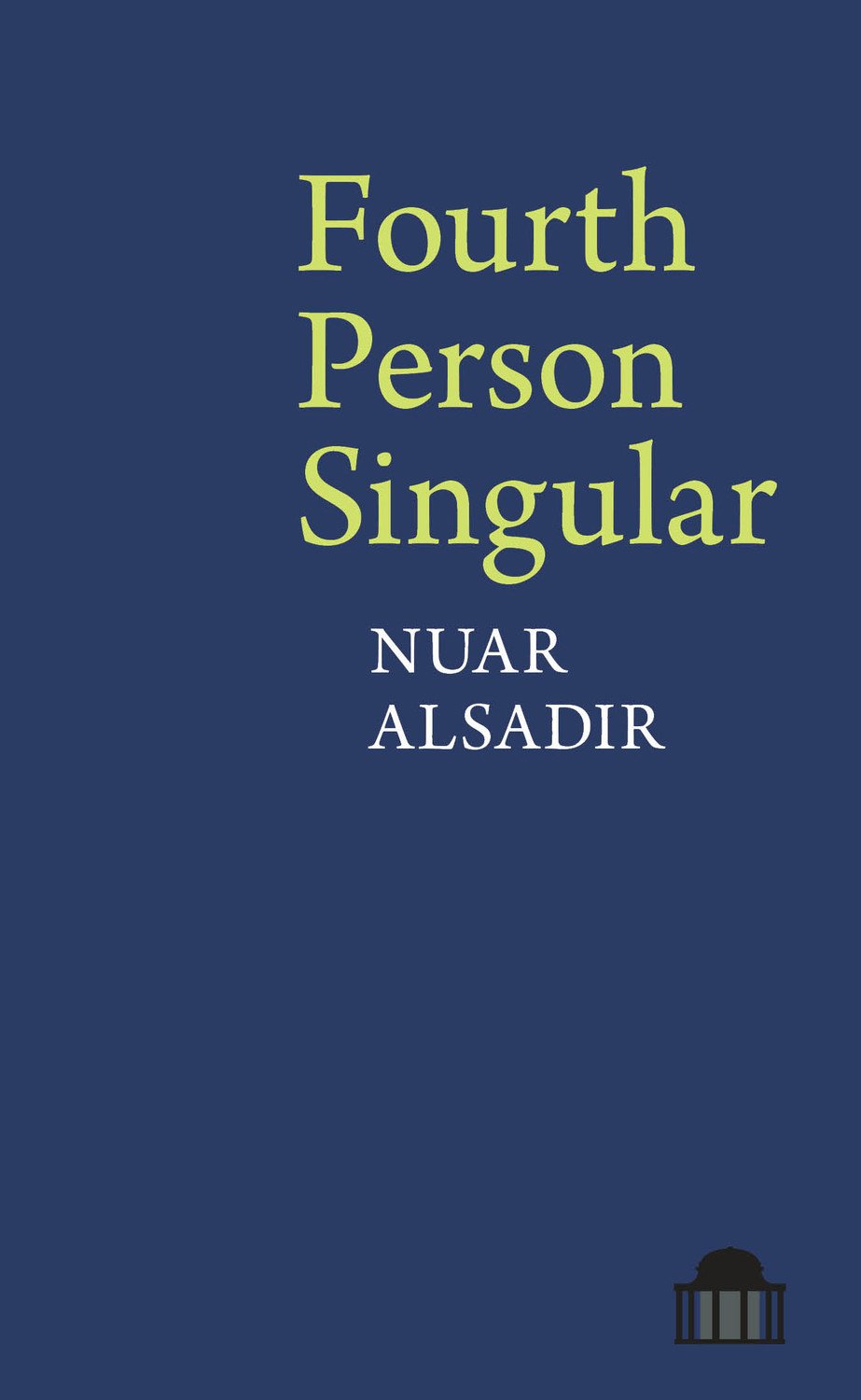Interview with 2018 NBCC Poetry Award Finalist Nuar Alsadir
For the past four years, the National Book Critics Circle has partnered with The New School’s MFA Creative Writing program, allowing the students to interview each of the NBCC Awards Finalists. In addition to building excitement for the Awards Finalist Reading and Ceremony held at the New School March 14th-15th, these interviews have built an intergenerational bridge between the writers of today and tomorrow.
This year, as part of the ongoing collaboration, and in support of the NBCC’s conversation about reading, criticism, and literature that extends from the local to the national, Brooklyn Magazine will publish and promote the interviews between NBCC Finalists and the current students of The New School.

Can you explain how you chose the title Fourth Person Singular?
There was a period during which I was trying to figure out what kind of speaker to use. The poems I found most moving, which serves as my measure of a poem’s value, were written in the first person but, as I had developed an aversion to confessional poetry, I didn’t want to write about my life in a narrative, confessional way. I had been playing with the speaker in my poems, trying to figure out how I could keep the work lyric – have an “I” addressing a “you” – but not use an “I” that matched with me, the facts and narrative of my lived life.
As I was trying to figure out how I could write in the first person, but peel the emotion away from event that evoked it, in my sleep I heard my dream voice saying, “The fourth person singular exists in the fourth dimension.” When I woke up, I looked up the fourth dimension and the physics behind it, and I began to work out what the fourth person singular might be.
What began as an attempt to work out a fragment from sleep, had, in the end, broader implications. Four-dimensional space time—and there’s a diagram of this in my book—involves a moment in the present, which physicists call an event (P), and two light cones, the past light cone and the future light cone. The past light cone encompasses all the events in the past that can affect the moment in the present (P) by particles or waves traveling at or below the speed of light, and the future light cone encompasses all the moments in the future that can be affected by the moment in the present (P) by particles or waves traveling at or below the speed of light. Basically, the idea is that any moment in the present also includes a part of the immediate past and part of the immediate future.
All other events outside of the past and future light cones are in the elsewhere. An event in the elsewhere can enter our past or future light cones, but only after a lag—we don’t experience events in the elsewhere simultaneous to their occurrence. A classic example is if the sun were to suddenly lose all of its light, because the sun is in the elsewhere of the earth, it would take eight minutes before the event would travel from the elsewhere to our future light cone on earth and we would be able to perceive it.
The idea became relevant to me when I thought about it metaphorically, replaced the moment in the present’s letter P with the letter I, as in the first person. If the four-dimensional space-time model were applied to an individual, you could imagine events in the elsewhere of your psyche that you don’t feel the effects of simultaneous to their occurrence as nonetheless affecting who you are—the way a child, for example, can be influenced by the trauma of a parent even if it is never spoken about, or the sadness of someone sitting next to you on a train can affect you even if you don’t exchange words. This would force us to question our boundaries of self. Even if something happened long ago in a world you don’t share directly—or aren’t conscious of sharing—it can nonetheless influence your present in ways you may feel or experience but not know. This is the idea of quantum entanglement. And maybe also of humanity. The fourth person singular occupies this quantum-ly entangled position. I imagine the fourth person singular would be intuitively familiar to anyone who bridges worlds, such as an immigrant, the child of immigrant parents, someone from a different background than everyone around them, &c. I realize this may all sound very intellectual, but, to me, Fourth Person Singular is a very vulnerable book because taking up the position of the fourth person singular demands that you open the door to your interior.
One aspect I found fascinating about your work is the use of redactions. Some words are redacted in a way that is not readable. In other cases, words are grayed out and can still be read with some effort. Can you talk about these choices?
Maybe at some level, the redactions reflect the difficulty I had in baring myself completely. But also there were some things I knew needed to be in the book, though not necessarily in a completely legible form. They reflect, for me, the way the mind works, how it represses, with some things pushed all the way down into the unconscious, while others are only partially repressed and still accessible. They also reflect the way our world works—Washington Square Park, for example, has a burial field beneath it with something like 20,000 corpses still buried there. Without knowing this, as you cross the park, you may receive a transmission from that other level that you feel without necessarily being conscious of what you’re feeling. One of the fragments in my book describes something similar through Hemingway’s process:
Hemingway would record every detail around an event—say, a bomb exploding—then take out the event and leave only its reverberations. I have been walking through reverberations with no sense of what the event was.
I also record every detail, but, rather than taking out the event, I leave it in and redact—or partially redact—it. Like the unconscious, those redacted sections emit reverberations that play a role in the text’s meaning even if the content cannot be accessed directly. I believe this so strongly, in fact, that I was still editing what was beneath blacked-out lines after the book had been typeset.
Your writing is part prose, part poetry. How would you describe it?
I don’t think of poetry as being defined by form, but by effect. I elaborate on this in a piece I wrote for Granta about going to clown school while doing research for a book I’m writing on laughter. In it, I explore the connections between clown, psychoanalysis, poetry and political action. The instructor would refer to the moment when the audience felt moved as poetry. Of course, as a poet, I was jolted by that, thought about it quite a bit. But, ultimately, I agreed with him. You know something is poetry if you feel moved by it, if it stirs your interior. A piece of writing can look like a poem, use words that are considered poetic, but without the ability to pierce the reader, it’s what Derek Walcott termed a fake poem. I think of Fourth Person Singular as a book of poetry, but not a collection of poems.
Your comments about Barthes and the way you described your experience of riding the Q train over the bridge as a « puncture » are very evocative. Is the act of writing a « puncture » for you?
Definitely! It is that ability to puncture that makes something poetry. Barthes is talking about photographs there—he calls the studium the part of the photograph we understand, can connect to contexts of meaning we already know, and the punctum the part that pierces us, evokes understanding outside of systems of knowledge—the part that resonates with our interior and evokes a strong feeling. I am—in poetry and in life—more concerned with the punctum.
How did you get from poetry to psychotherapy? Or was it the other way around?
I’ve been writing poetry since I was a child (my first poem was published when I was nine). I used to think I had ESP because there were things I saw and felt—reverberations from beneath the surface—that no one around me was talking about. Poetry became the space where I could explore those kinds of perceptions freely.
I enjoyed sketch 27 very much. The passenger on the train becomes an object subject to gravity. Can you tell more about how these sketches started?
Thank you. I have a sketch book that’s separate from my notebook, which I carry around with me. Whenever I have a pocket of time, I sketch in it, mostly verbal sketches. It gives me a way of valuing all thoughts, feelings and perceptions equally, rather than seeing some as more weighty or meaningful than others. I am then free to find inspiration anywhere, even on the subway—maybe especially on the subway, as that’s where the knob to quantum entanglement is on high, which means I’m most likely to be punctured.
You might also like 


























